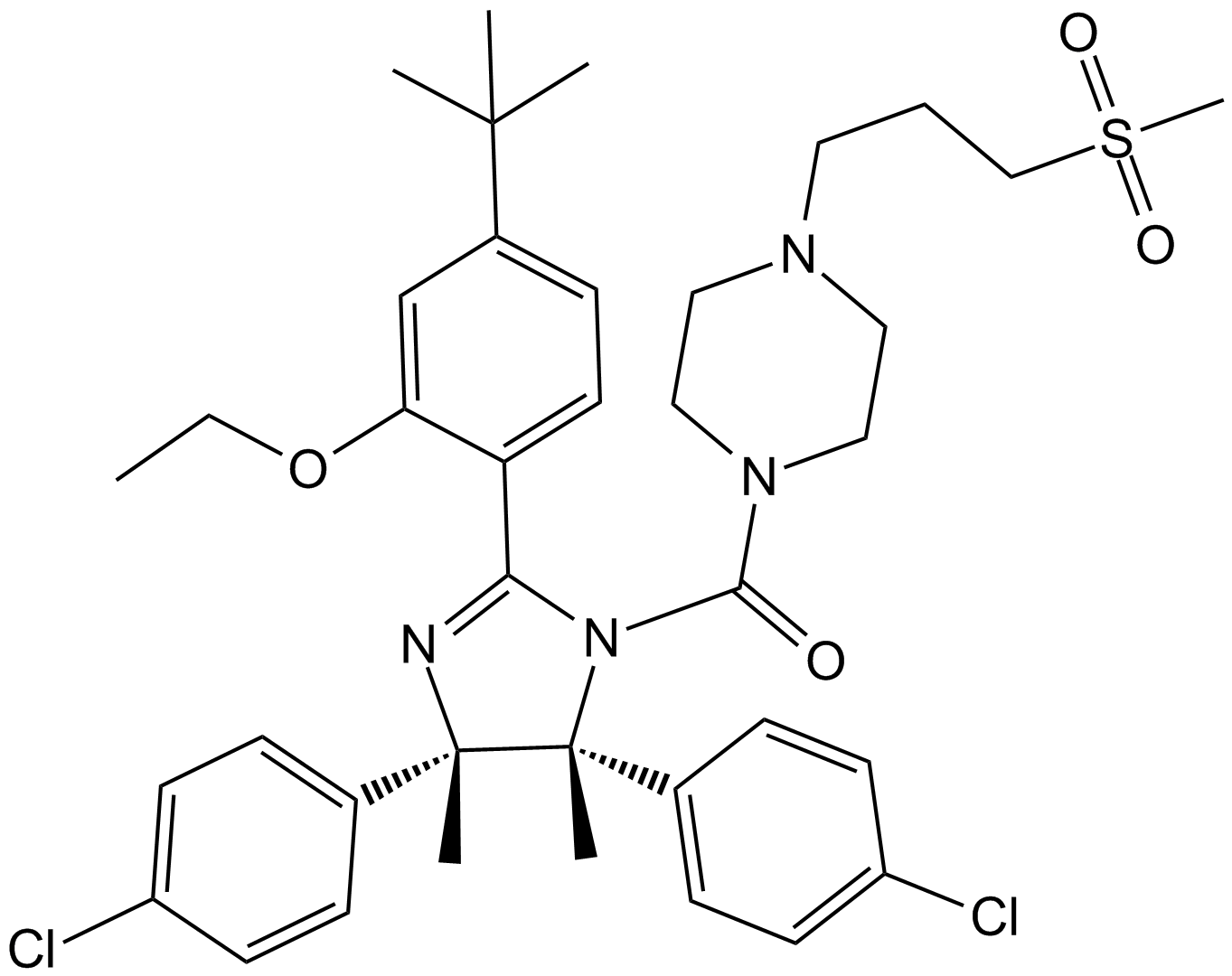RG7112 (Synonyms: RO5045337) |
| Catalog No.GC13019 |
An inhibitor of the MDM2-p53 interaction
Products are for research use only. Not for human use. We do not sell to patients.

Cas No.: 939981-39-2
Sample solution is provided at 25 µL, 10mM.
RG7112 is a selective inhibitor of p53-MDM2 binding that frees p53 from negative control, activating the p53 pathway in cancer cells leading to cell cycle arrest and apoptosis. [1]
P53 is a potent tumor suppressor that activates the transcription of a subset of genes controlling cell-cycle progression and apoptosis. MDM2 is a negative regulator of p53 that binds the transactivation domain of p53 and inhibits its ability to activate transcription. MDM2 is also an E3 ubiquitin ligase that targets p53 for proteosomal degradation. MDM2 overexpression is one of the mechanisms by which the wild type p53 function is impaired. [2]
RG7112 has been profiled extensively in many cell lines. In 15 cancer cell lines expressing wild-type p53, it shows IC50 in the range of 0.18 - 2.2 μM. However, the inhibition is much less in seven cancer cell lines with p53 mutation, IC50 5.7 - 20.3 μM. The overall selectivity is 14-fold.
In the animal models, RG7112-induced thrombocytopenia occurred rather late during the treatment period and persisted after drug discontinuation, suggesting that the drug acts on early hematopoietic progenitor cells. This is supported by the RG7112 ability to inhibit CFU-MK colonies formation by the CD34t cells in vitro. Administration of RG7112 in rats and monkeys reduces WBC counts and, to a lesser extent, hemoglobin levels. In patients treated with RG7112, neutropenia is among the serious adverse events while anemia occurred only in 2 of 20 patients. Interestingly, when tested in vitro, the same concentration of RG7112 that reduced CFU-MK colony formation do not significantly affect the formation of BFU-E and CFU-GM derived colonies.
References:
[1] Hernan Carol, C. Patrick Reynolds, Min H. Kang et al. Initial Testing of the MDM2 Inhibitor RG7112 by the Pediatric Preclinical Testing Program. Pediatr Blood Cancer 2013;60:633–641
[2] Binh Vu, Peter Wovkulich, Giacomo Pizzolato et al. Discovery of RG7112: A Small-Molecule MDM2 Inhibitor in Clinical Development. ACS Med. Chem. Lett. 2013, 4, 466−469
[3] Camelia Iancu-Rubina, Goar Mosoyana, Kelli Glenn et al. Activation of p53 by the MDM2 inhibitor RG7112 impairs thrombopoiesis. Experimental Hematology 2014;42:137–145
Average Rating: 5 (Based on Reviews and 30 reference(s) in Google Scholar.)
GLPBIO products are for RESEARCH USE ONLY. Please make sure your review or question is research based.
Required fields are marked with *




















